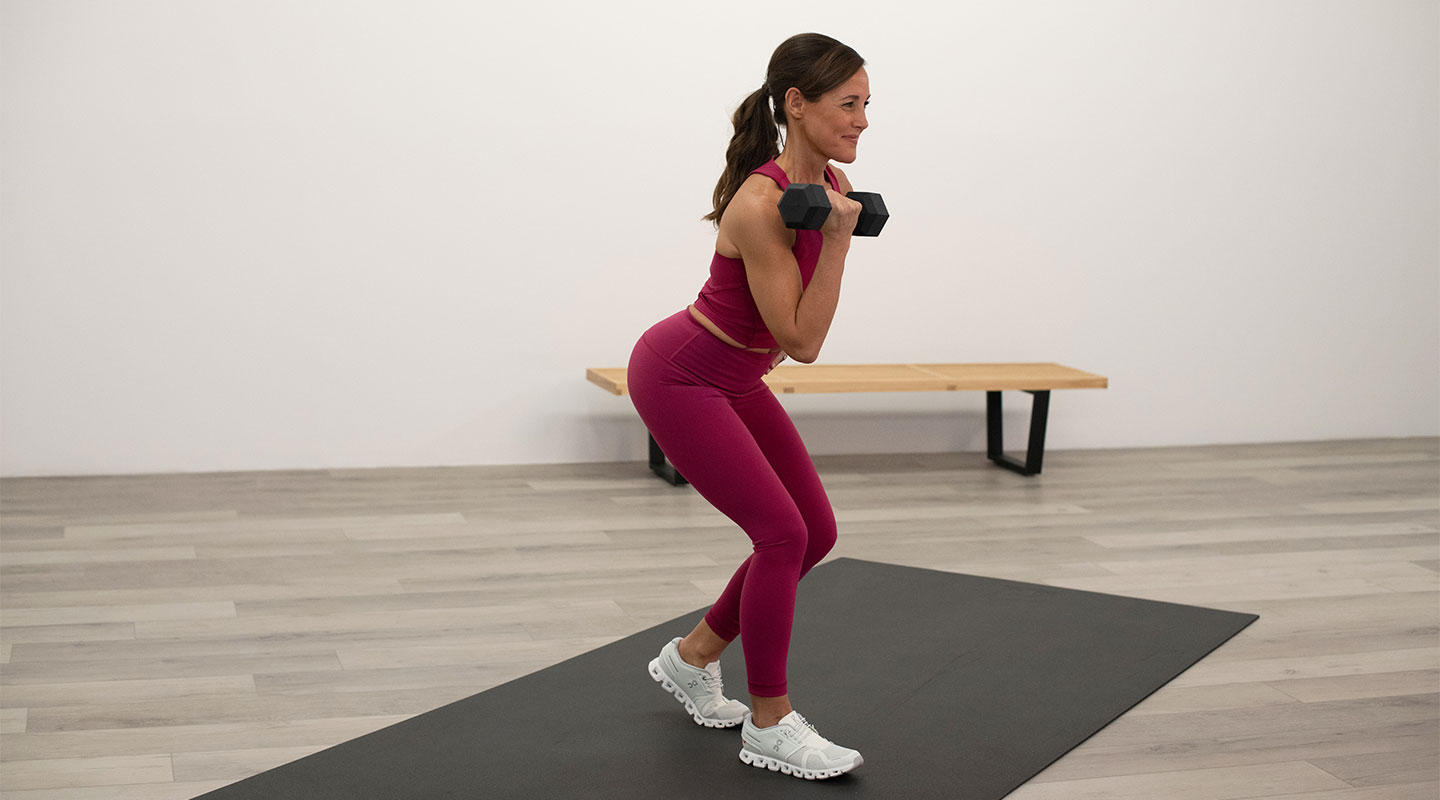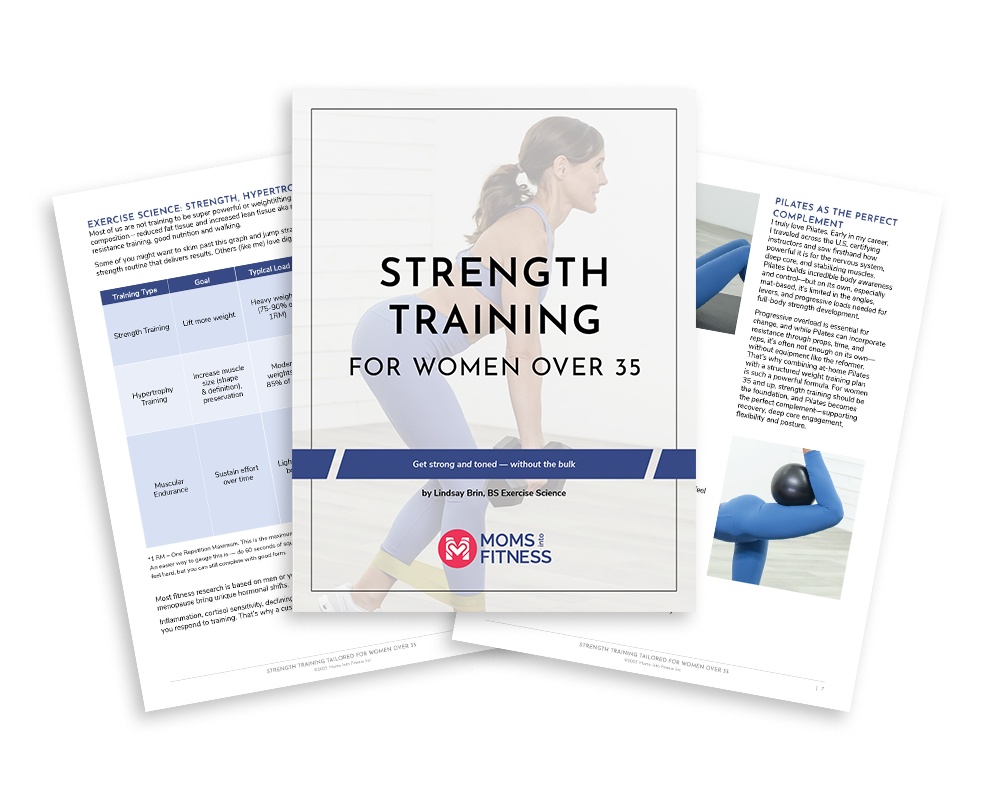
Megan Hoover, DPT and Lindsay Brin, BSE
Most women know strength training is good for aesthetics, many know it’s important for bone density. But consider this: strength training also helps us maintain a level where we can do all the things we love — for many years to come.
Plus, strength training betters our body composition (lose fat and increase lean tissue). While we usually default to cardio for fat loss – strength training is a real game changer for fat loss. It boosts your resting metabolism (BMR), so your body becomes more efficient at burning fat all day, not just during workouts. Especially after 35, when hormones make fat loss harder, strength training plus daily walking is the MVP.
For some, the word strength training defaults to the thought of bulky muscles. Here’s the thing…you’re not actually adding new muscle fibers—you’re strengthening and reshaping the ones you already have. Women are born with a set number of muscle fibers, and resistance training helps those fibers grow through a process called hypertrophy. For women over 35, this kind of training is key to maintaining tone, improving metabolism, building strength and aging gracefully. Explore our Strength Training Guide for Women 35+.
Typically, muscle mass and strength increase steadily from birth and until 30 to 35 years of age. We don’t have to think about it much. After that, without regular use, our muscles weaken and lose mass. This age-related loss of muscle mass and strength is called sarcopenia. After age 35 we lose 3 – 8% of our muscle every decade! Muscle is lost far more easily and quickly than it’s built, so a consistent strength training routine is crucial, especially as you get older.
The benefits of building and maintaining our muscular strength, especially over age 40, are many. Research shows aerobic exercise in isolation reduces your all-cause mortality by 16 percent and strength training only reduces it by 21 percent, whereas if you do both, you reduce your all-cause mortality by 29 percent. (source) Besides potentially living longer, here’s what else you can gain from resistance and weight training.
Around age 35, hormonal shifts — particularly in estrogen, progesterone, and testosterone — begin to change how our bodies respond to exercise. Lower estrogen levels impact muscle recovery, joint health, and how efficiently we build and maintain lean muscle. Strength training becomes even more important, but how we train needs to adjust too.
When hormones shift, our bodies become more sensitive to inflammation, stress, and recovery demands. Traditional high-volume or high-intensity workouts that worked in our 20s and early 30s can now backfire — leading to longer recovery times, increased cortisol, and even muscle breakdown.
Instead, after 35, it’s smarter to focus on strength training + walking. Walking fills the gaps strength training alone can’t do, plus it helps balance hormones and increase fat loss. While HIIT cardio offers some great benefits, walking provides everything most women need for fat loss, hormone balance, and mental clarity.
At Moms Into Fitness, we design strength workouts to match these needs: shorter sessions, smarter progressions, and exercises that build resilience without overwhelming the body.
Download 10 Ways to Make a Strength Training Routine work for you Strength Training Guide for Women 35+.

You need to specifically strengthen your muscle groups to be able to withstand the physical demands you put your body through — from daily activities to athletic pursuits.
Strength training is very important to increase the tolerance for load on our joints and structure. Whether it is chasing your kiddos (or grandkiddos) around the yard, running a marathon, or taking up powerlifting, your body has to be able to effectively manage and control your movement and positions. For me, when I strength train, my knees don’t hurt when I run.
Stability is the body’s ability to control a joint through motion or activity with appropriate speed and quality of movement. Your pelvis/hip must stabilize the leg you are standing on to bring the other leg through to walk. If your glutes are weak, you cannot control this motion and will use your joints to stabilize — and over time you will reach mechanical failure. This may show up in the form of low back pain, pelvic pain, knee pain, plantar fasciitis, just to name a few.
For example, a marathon runner needs to run to build endurance, but if she does not appropriately strengthen the muscles that control side-to-side and rotatory motions (i.e., glutes, adductors, core), she will eventually end up with a repetitive injury. For pregnant and postpartum mommas, this stability is extremely important to minimize back pain, diastasis recti, pelvic pain, and other musculoskeletal issues.
Additionally, as we age, women can be more susceptible to fractures due to osteoporosis. A broad strength training program, incorporating exercises that use multiple muscle groups and joints, is an important prevention method.
By adding muscle through strength training, we elevate our basal metabolic rate (metabolism). This is why athletes burn more calories (units of energy) at rest.
The composition of muscle and fat is extremely different. Muscle tissue is a lot denser than fat tissue, i.e., it weighs more. So this means you can have more muscle mass, but actually appear smaller. Gasp! If you’re a little confused, or maybe just don’t believe me, search “10 pounds of muscle vs. 10 pounds of fat.” Surprised? The yellow fat tissue is chunky and lumpy. The beautiful muscle tissue is smooth and compact.
Increasing muscle decreases fat and minimizes future weight gain. When you exercise, you don’t turn your fat into muscle, you lose the fat. A body with more lean muscle has a higher resting metabolic rate — simply put, you burn more calories at rest when you have more muscle on your body.
If you maintain muscle (also known as lean tissue) some research shows that your BMR remains steady from ages 20 – 60. In one study, nine months of resistance training increased resting metabolic rate by an average of 5 percent or about 158 calories per day (Aristizabal et al. 2015).
Something important to understand is that you can’t spot-reduce fat. A study done by the American College of Physicians found that the dominant arm of a tennis athlete did not have less stored fat in her strong arm vs. her non-dominant arm. So basically, even though an athlete might use their left/right arm to pitch a baseball or whack a tennis ball, the stronger arm will not have less fat. You could even compare all of the body’s stored fat to a full gas tank. When we need gas (fat for energy), you can’t choose which part of the gas tank your gas comes from. It is removed from the tank as a whole. The same is true for excess body fat.
Our bodies were made for movement. They were designed to withstand all different postures, positions, movements, and forces. However, we need to take the appropriate steps to keep our bodies healthy so we can successfully manage normal tasks. Good posture and alignment gives better transfer power in athletics.
Target a kyphotic posture (hunchback) by strengthening the backside of your body. Combat knee pain by strengthening your legs/glutes and stretching your chest. Help back pain through strengthening the transverse abs, etc.
Postural and alignment issues feed right into pain and injury. When we are feeling nagging pain in a certain body part, our instinct is to stretch it or massage it or rest it. But have you ever considered you may need to strengthen that muscle (or another one)? It can be hard to pinpoint the culprit, so this is where a physical therapist can be valuable. They can help you identify a weakness or compensation pattern, and often the solution is strengthening exercises.
Exercise guidelines recommend getting 150 minutes of aerobic exercise and at least two full-body strength training sessions per week.
Use moves like B-stance squats and glute kickbacks—a mix of compound (multi-joint) + isolation (single-joint) moves are both essential.
Training volume is key, especially after age 35-40 when perimenopause and hormones are at play. Too much volume and you can add bulk you might not want. Too little and it’s not as effective. Aim for:
• 3 sets per exercise (2 sets for beginners)
• 6–12 reps per set
• Use weights that challenge you by the last 1–3 reps
As you get more conditioned you need progressive overload. This means gradually increasing intensity—by lifting heavier, adding pause or tempo techniques, smart exercise sequencing, or using tools like bands, balls, dumbbells, and sliders. We do this in our Weekly Schedule.
The goal is to move every day — don’t over complicate it. The goal is balance. The goal is making it fun. What is more enjoyable and what can you stick with?
We have plans laid out for you, so you don’t have to think about what to do, which muscle groups to work which day, etc. Try our Weekly Schedule.
The health of our muscles and joints is dependent on the health of our tissues. Strength, flexibility, cardiovascular, corrective exercises, and hydration are all components of keeping our bodies healthy so we can do what we love! Nutrition is another key component in achieving your health and fitness goals and keeping your body feeling its best after 40. Learn more about nutrition and weight loss after 40.
